Getting started with HERO System, a flexible tabletop RPG that’s all about imaginative play

Dungeons & Dragons is the gold standard in tabletop role-playing games. But it’s limited to the settings and to the classes it offers. What if there was a game that allowed for a single system to be used, for any kind of setting, and for any kind of characters that the players could dream up?
HERO System is the answer. It takes place in any genre that the Gamemaster and players have agreed to play: medieval, modern day, futuristic, wild west, or another planet. You could play in a game where the world of Marvel crossed over with the DC Universe, or just about anything else you can think up. HERO System lays down a flexible framework and gives rules to explain setup and numbers — but beyond that is only limited by imagination.
As an example, I once GMed a group that consisted of a billionaire with a briefcase that shot money to bribe people; a woman with no arms and legs, just a floating torso with psychic powers; a raptor with the brain of a human scientist that had a pet tyrannosaurs with guns attached to it; and a werekangaroo that was a demolitions expert, who kept his explosives in his pouch. All of these were able to be created in HERO System as it is set up, without any special requests. D&D can’t do that without some serious homebrewing.
So what is the HERO System, and is it worth playing? Let’s discuss.
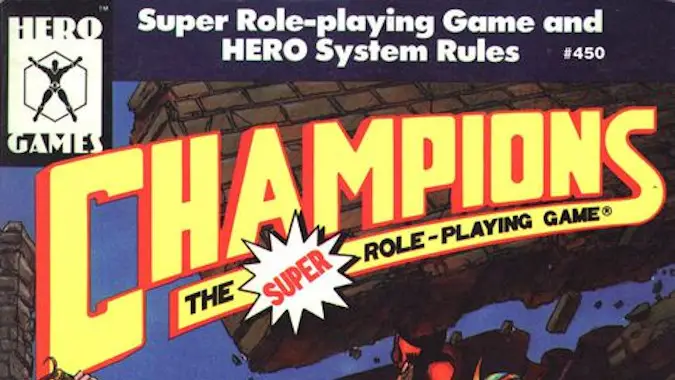
A brief history of the HERO System
Back in 1981, Hero Games released tabletop RPG named Champions. This game focused on creating superheroes, and allowed players a lot of diversity in character creation. What set the game apart from a lot of other RPGs was that there was less randomization in character creation. Rather than the starting ability scores being decided by the rolling of dice, players were given points to distribute so they had full control over their characters.
With the success of Champions, Hero Games reused the same system for other RPGs, branching off into genres like fantasy, science fiction, and international spy thrillers.
In 1990, Hero Games released a new version of the TTRPG that was no longer specifically tied to superheroes, or to any specific genre: HERO System. This would see a few revisions over the years, with HERO System 6th Edition released in 2009, which remains the latest version of the core system.
Hero Games is still around, and continues to release products for Champions and for other games to use with HERO System. There are new campaigns for different genres, templates for fast character creation, and stories to help visualize these fictional worlds. There’s still a strong emphasis on Champions, their most successful franchise, but the fun part of the system is that it can be used to do anything.
Here’s how HERO System works.
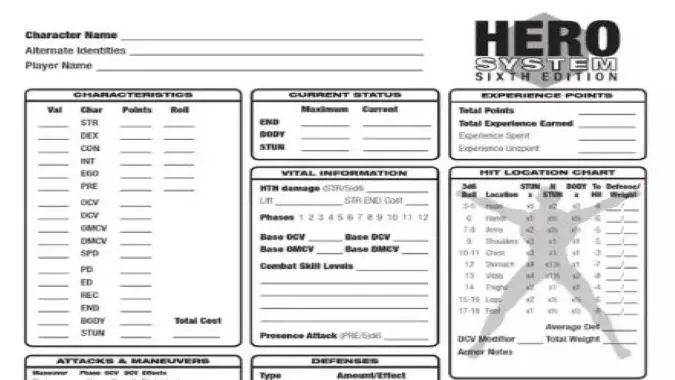
Starting off the campaign with character creation
The strongest part of HERO System is the character creation. The 6th Edition splits the rulebook into parts, and Character Creation takes up an entire book. It’s complex and loads of fun. Similar to character creation in Shadowrun, a player is given Character Points, and categories to spend points in. Then the character can be given Complications that add more points. Complications can help create the character while giving them extra abilities, for example, the woman who can fly constantly, but she needed to because she had no legs.
There are five categories for players to spend points in: Characteristics, Skills, Perks, Talents, and Powers.
Characteristics are like Ability scores from D&D. Some play a similar role with the same name, some differ. They are:
- Strength, Dexterity, Intelligence: These have similar functions to D&D, used for attacking, and for skill checks.
- Constitution and Body: Both contribute to the health pool and gauge how much damage a character can take.
- Ego and Presence: These stats are used for defense, like Armor Class in D&D, but Presence is for physical damage and Ego is for psychic and mental damage.
- Speed: How fast a character moves (more on this later).
- Comeliness: This is about how attractive the character is, and not used in combat or skill checks — but sometimes looking good is important.
Skill is how much a character knows about topics, like flying planes, having firearms training, or being an expert on art history. It’s anything that the character could have read up on, or taken classes in.
Perks are what the character has access to, such as wealth, a special car, an underground base of operations. Batman would drop a lot of points in this category.
Talents are stronger than Skills, but not exactly super-human. These would be abilities that they are a prodigy or ad a natural talent for, like playing the piano at performance level, speed reading, fast reflexes, or a heightened sense of smell.
Powers is the final category, and while the name suggests superpowers, it isn’t strictly limited to superhuman abilities. Cybernetics are here for futuristic settings. There are options for all kinds of weapons — guns, swords, explosives. Even if your game place within a samurai setting, points will be spent here to make characters good at fighting and swordplay.
Most Powers start off generic: the player decides what they want to do and then modifies generic Powers to suit their character. They might buy a type of attack, such as Energy. Then the player decides whether this energy comes from the character’s eyes, hands, mouth. Or it could come from a weapon instead. Does the Power require a gesture to perform? In that case it can’t be cast if the character is immobilized. The Power could also require an activation word, in which case it couldn’t be used if the player is silenced. Maybe players want to add extra damage to the Power, or change the damage type to frost. By the end, the player will describe exactly how the attack looks, as this is their creation, not a cookie-cutter spell.
That generic Energy Attack, it could end up being Cyclops’s eye blast from X-Men or it could be Elsa arctic freeze from Frozen. It all depends how the Power is built and described.
The GM will let players know how many points they have to spend, thereby letting them know how powerful their characters are at the start. The rules don’t strictly state how many points a character begins with — it’s all up to how you want to play.
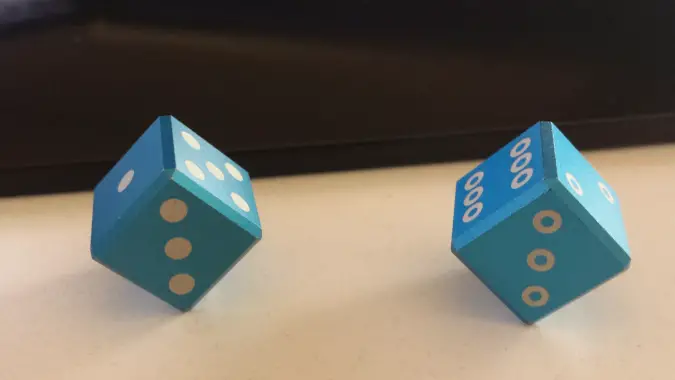
You only need one kind of dice
For dice, all you need is the six-sided kind (d6), unlike D&D, which uses seven different dice. However, a lot of d6 are used. A lot. Players will need up to fifteen or twenty of them. It’s great to see that many scatter across the table… and often onto the floor.
When going for an attack or skill check, the lower the number the better. Three six-sided dice are rolled, and to succeed, the total has to be under a target number. Then other numbers affect that target number. For example, let’s say you’re trying to attack a powerful villain. Your our character had an attack value of 8 and attacked a villain with a defense value of 10. The target number will be equal to, as an example, 11 (the starting target number) + 8 (your attack value) – 10 (villain’s defense value) = 9. Roll 3d6, and if the result is less than 9, the attack hits.
Now damage is dealt. Generally, melee damage is 1d6 per 5 Strength, but there are always ways to add additional damage when creating the character. If the character were The Hulk and somehow built up the character’s Strength to 60, then the damage dealt is 12d6. To calculate damage, they would roll twelve dice.
Rolling that many dice is just fun. Messy, loud, and with dice are scattering everywhere, but fun.
Sometimes, there are ways to multiply damage. Damage could be 4d6 X 1d6, so not only would you roll the first dice to get the total, but then you would roll another die and multiply your initial total by the number of this second dice roll. That results in some high numbers, and we’ve already talked about how rolling handfuls of dice at a time is fun.
HERO System is heavy on the math. Grouping up the dice, calling out numbers, correcting other players — it’s all a core part of the game.

When does a player take their turn in combat?
In HERO System, players don’t roll for initiative. Instead, there are two Characteristics that determine combat order: Speed and Dexterity. Each turn is twelve segments long, and players’ Characteristics determine when and how many times players can act in each turn.
Speed determines how many times players can act during the turn. There’s a Speed Chart in the rulebook that shows who acts when. For example, if a character had a Speed of 5, they would get to have an action in segments 3, 5, 8, 10, and 12. If someone created The Flash and pumped their Speed up to 12, they could do something in all twelve segments of combat. This really gives off a sense of someone who moves fast, as opposed to D&D where everyone attacks once per six-second round.
Dexterity determines the order players act in. For a segment where multiple characters have a Speed that allows them to act, the character with the highest Dexterity goes first. To really create The Flash and get that sense of speed, the character’s Speed and Dexterity would have to be the highest.
A segment where a character can take an action is called a Phase.
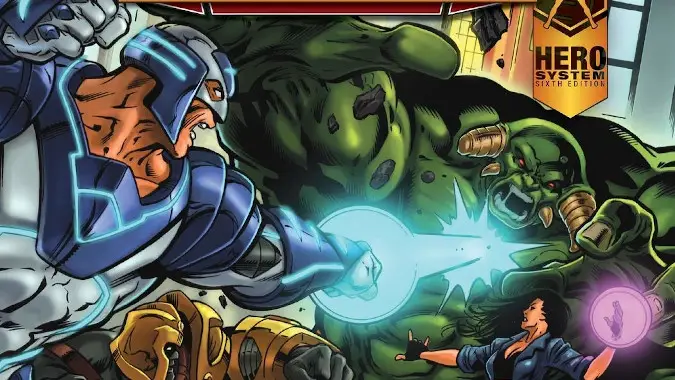
What does a character do in their Phase?
It’s difficult to define what a character does in a Phase, because it will vary based on how the character was created. To break this down into very general terms, in a single Phase a character can:
- Take 1 Full Phase Action
or
- Take 2 Half Phase Actions
and/or
- Take a Zero Phase Action
What type of actions are these? Let’s look at the werekangaroo as an example.
When setting up the character, transforming into kangaroo form was considered turning on a Power, which was customized to work like this:
- It was a Zero Phase Action under a full moon
- It was a Half Phase Action under the light of any other moon
- It was a Full Phase Action during the day, or a new moon
This means on the night of a full moon our werekangaroo could transform from human to kangaroo in a Phase and still have his full action left — but any other time, he would use more of his Phase to transform. Drawing a weapon, such as a bomb from his kangaroo pouch, is a Half Phase Action. An action that requires an attack roll, such as throwing that bomb, is also a Half Phase Action. And with that, the werekangaroo’s Phase is over.
On the next Phase, the kangaroo wants to chase down a fleeing enemy. Using his full movement would be a Full Phase Action. However if instead he used half his movement or less, then this would be a Half Phase Action. This would be leave him another half action, such as a power kick, if that was a Skill or Power he had.
As you can see, what happens in each Phase varies wildly based on setting and the type of characters in your game. It can include melee combat, psychic attacks, shootouts on horseback, or intergalactic ship battles. They all use the same basic framework and guidelines, and the characters and setting change how it plays out. Movement, attacks, investigations, equipping weapons, weakening enemies, buffing the party — these will all be different forms of Full, Half, or Zero Actions, depending how characters are set up when created.
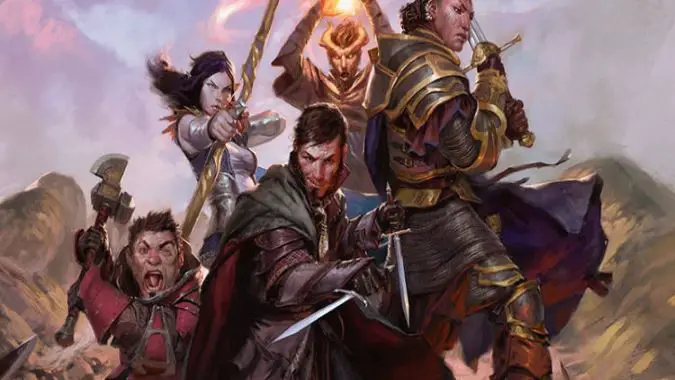
How does HERO System compare to D&D?
There’s so much more diversity and flexibility with HERO System. Character creation is extremely in-depth, and allows players to focus on any aspects they want. With no limitations like Races, Classes, or even descriptions of what the Powers are, everything is up to the imagination of the GM and players to create the world.
With D&D, there are already certain expectations in place, even though there’s still plenty of freedom within that. This system isn’tt limited, and can be applied to any setting, whereas D&D is strictly that fantasy scene. HERO System is a perfect outlet for writers to translate their characters and stories into an RPG setting. The system lets people who are detail-oriented and would be frustrated by how much is fixed or pre-generated in other RPGs have the freedom to really make what they want.
But the very thing that makes HERO System great also works against it. With so much freedom and so many choices, it can time consuming to set up and play. There’s no quick character builder or online automated character sheets, and someone really has to know the rulebook to create the character that is in the player’s mind.
As GM, creating all the NPCs in such detail slows down the process, but using the same templates — or the templates you can purchase — over and over to save time is counter to the fundamental feature of this system. There’s no quick, free feature like D&D Beyond to instantly generate creatures or grab ready-made spells. Every campaign is a homebrew campaign.
D&D is more user friendly and has more tools available, either directly from Wizards of the Coast or from others online who provide them free,or relatively cheap.
How to get started with HERO System
Every player needs a Character Sheet, and the official Character Sheet is available on the Hero Games website here, for free, to print or to fill out online. The GM will want to have a lot of those handy to create many NPCs for the game. But that’s the extent of the free content.
To get started making characters and learning all the rules of combat, a PDF version of the HERO System 6th Edition: Character Creation and Combat and Adventuring is available for $30. These are available as separate books, for a total of $60 in paperback. It’s recommended you only have one copy for the group, and then spend the first session making characters together. No need for everyone to buy the books separately.
After that, there isn’t necessarily any official merchandise for maps, figures, or sourcebooks, depending on what setting you’re using. Hero Games has a lot of material and good for ideas, if needed, but you can go without if you completely want to customize your game. All of the standard TTRPG accessories can come in handy here, like reusable erasable grid-maps, generic figures or tokens, and GM’s screen — just ignore the dragons and orcs if you recycle all the D&D equipment already on hand. But few are wholly necessary: in the end you can play with printed character sheets, a copy of the rulebook, and a lot of dice.
HERO System is a game that relies heavily on the imagination of those playing, which means you don’t need much more than your creativity to play.
Please consider supporting our Patreon!
Join the Discussion
Blizzard Watch is a safe space for all readers. By leaving comments on this site you agree to follow our commenting and community guidelines.





